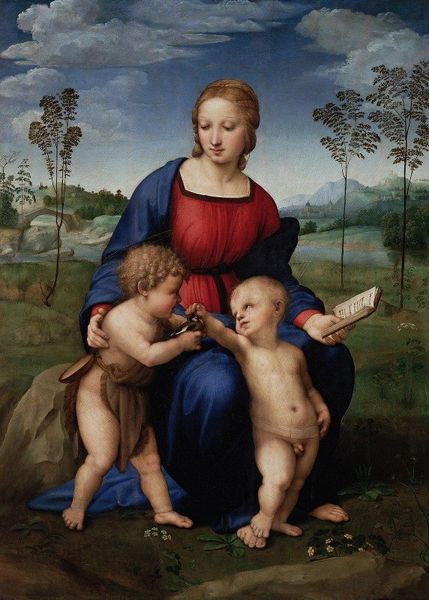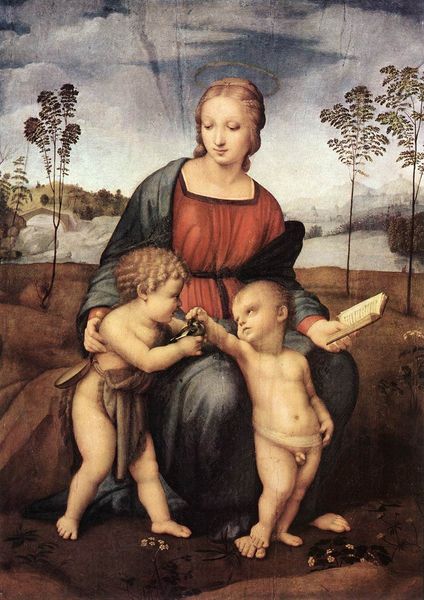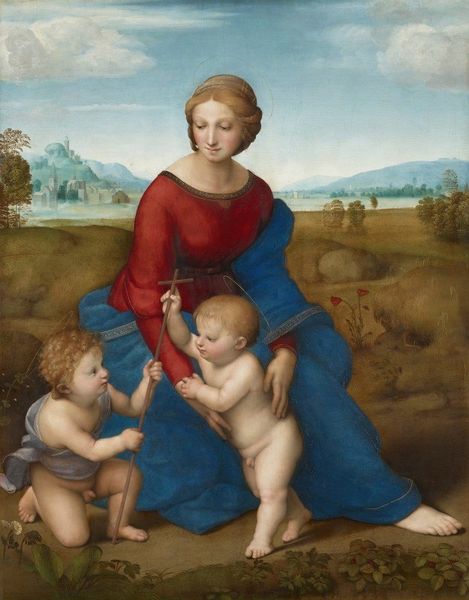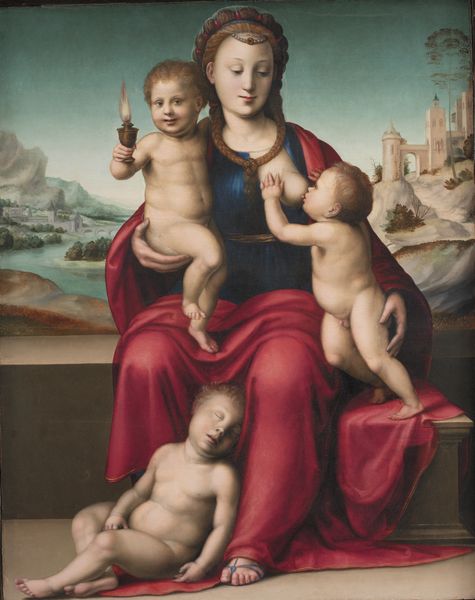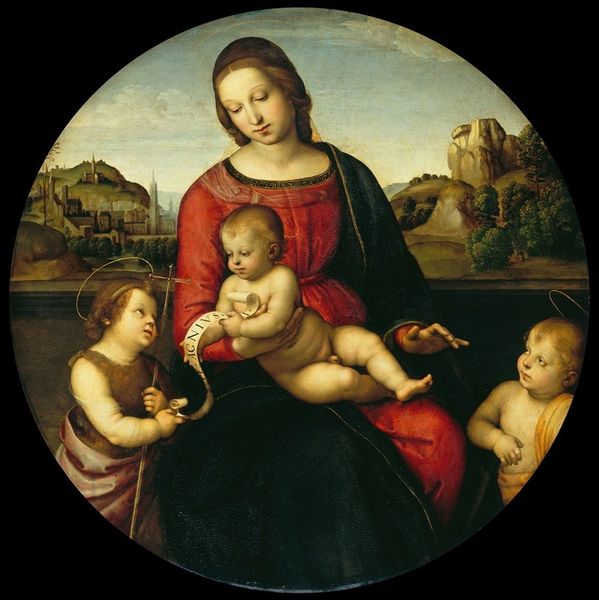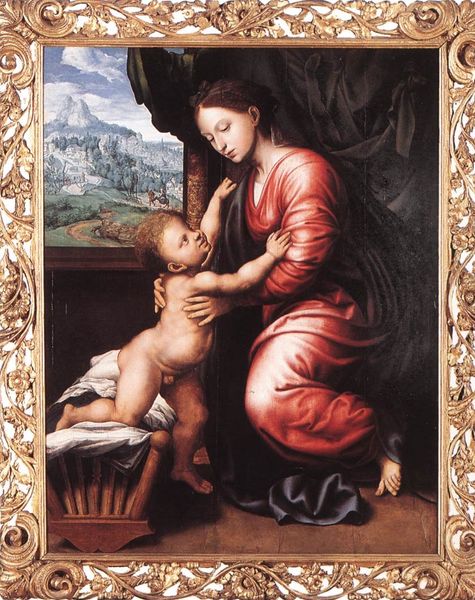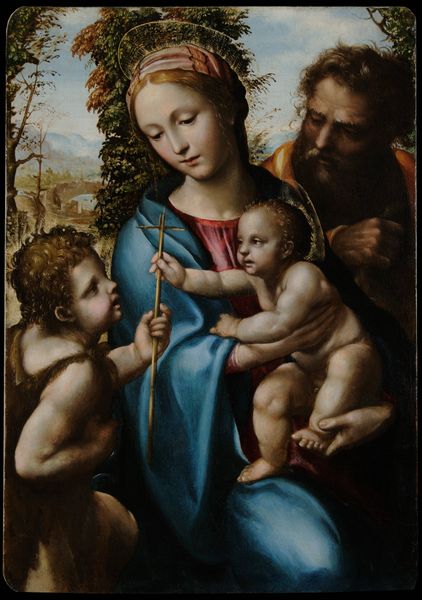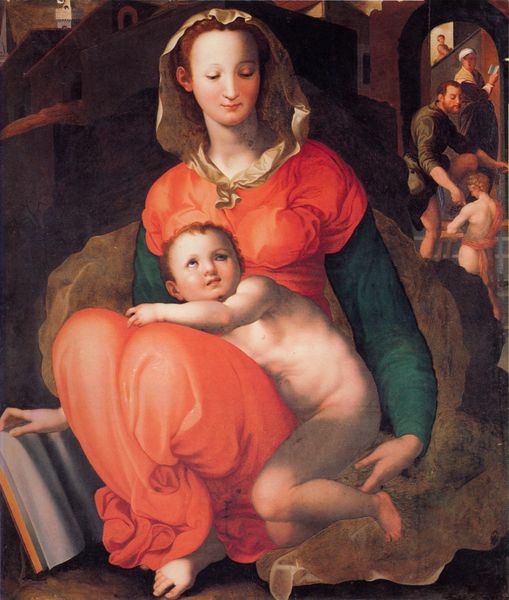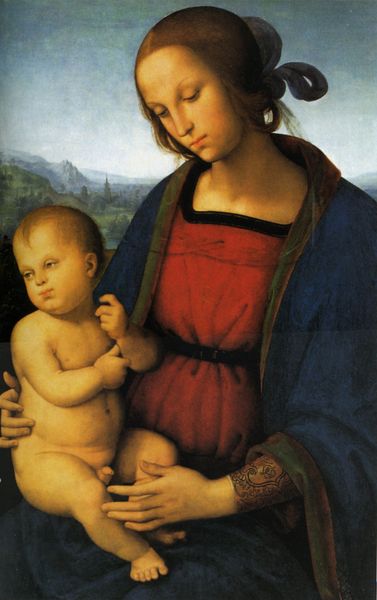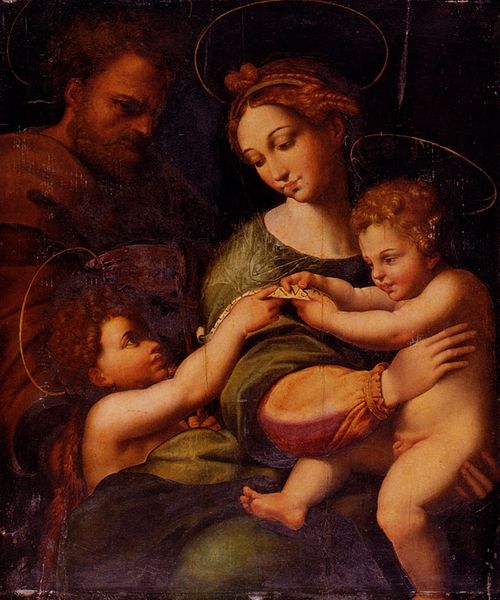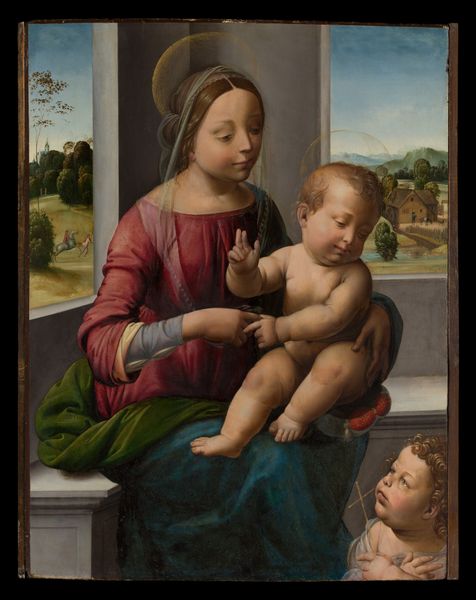
panel, painting, oil-paint
#
portrait
#
high-renaissance
#
panel
#
painting
#
oil-paint
#
figuration
#
italian-renaissance
Dimensions: 122 x 80 cm
Copyright: Public domain
Editor: This is Raphael’s “The Virgin and Child with Saint John the Baptist,” painted around 1507. It’s an oil on panel painting. It strikes me as very serene, with a soft light. How do you interpret this work in its historical context? Curator: Considering its time, the serenity is deceptive. This image participates in constructing ideals of motherhood and divinity that had profound implications for women's roles in society. Do you see how the Virgin's idealized beauty and passivity reinforce expectations of female piety and submission? Editor: I guess I hadn’t thought of it that way. It's a bit unsettling to consider the restrictive social expectations tied to this seemingly peaceful scene. Does the inclusion of John the Baptist add another layer to that? Curator: Absolutely. His presence signals themes of prophecy and sacrifice. Notice how the infants interact, one reaching towards Mary while the other, John, looks towards the distance, holding a staff symbolic of his future. How does this contrast play into the broader narrative of sacrifice and divine purpose, especially regarding the role designated to women? Editor: So, the painting isn’t just about religious figures; it’s also reflecting and perhaps reinforcing gender roles within Renaissance society? Curator: Exactly. Consider who was commissioning and viewing these works. It's vital to recognize how art like this actively shaped and reinforced societal structures, especially around issues of gender and power. The painting is beautiful, yes, but it also serves as a potent reminder of how even seemingly benign images can perpetuate ideology. Editor: I never would have thought of it that way on my own. It gives me a lot to think about in terms of art's role in shaping culture. Curator: Indeed. Hopefully it serves as encouragement to analyze and consider whose voices and experiences might be missing from this idyllic depiction.
Comments
No comments
Be the first to comment and join the conversation on the ultimate creative platform.
